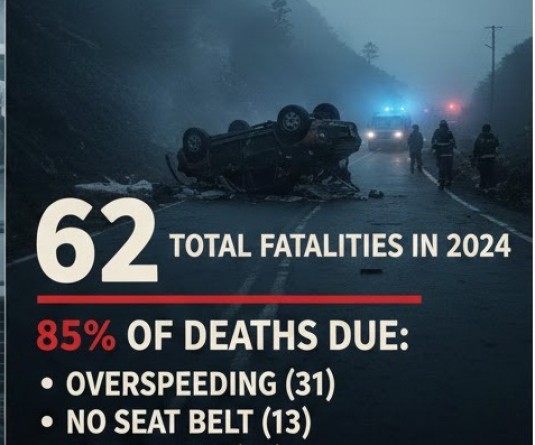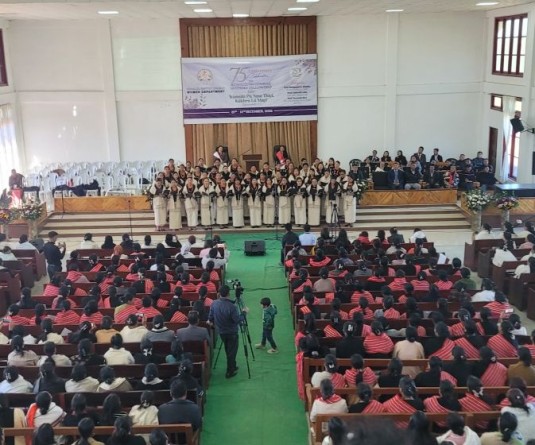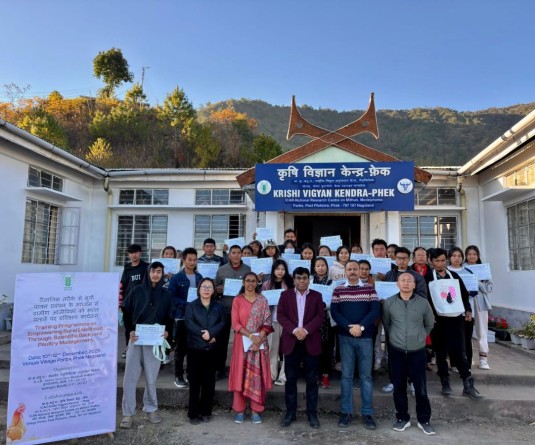
Dimapur, October 2 (MExN): Continuing its demand for the eviction of Beisumpuikam village in Intangki Reserved Forest, the Western Sumi Hoho today declared that the state Government’s recognition order of Beisumpuikam village is dubious, which has not fulfilled the requirements for recognition and therefore illegal.
A press statement issue by the WSH President Hokiye Yepthomi and General Secretary Akavi Zhimomi said that the exact location of Beisumpuikam village is supposed to be established at ‘Misa Disa Nala’, outside of Intangki and thus the recognition of Beisumpuikam is dubious. “This recognition order is ‘dubious’ because of the fact that the Sate Government in connivance with some Forest departmental officers and Zeliang politicians allowed the Beisumpuikam to establish the village without undertaking actual spot verification,” the WSH stated.
Substantiating their stand, the Western Sumi Hoho said that Beisumpuikam village, under Peren Sub division as in 1991, have boundaries with ‘reserve forest boundary’ in the north, Mongleu River in the east, Jangdilwa in the south and ‘Ndangki Reserve Forest in the west.
In this regard, the WSH pointed out that the demarcated boundaries of the Beisumpuikam should be outside the Intangki Reserved Forest.
The WSH stated that the state government recognized the Beisumpuikam village without ascertaining where the village is actually located.
Besides, the WSH pointed out that the Forest Department and the Department of Land Records & Survey should have first survey the proposed area and ascertain from appropriate authourity, find out whether the land ‘offer’ actually belongs to Beisumpuikam or not, make a formal agreement between Beisumpuikam and the forest department that any encroachment will authorize the government to evict the villagers.
“The Department should put on map and on the ground clear boundary line,” contended the WSH.
The Hoho also pointed out that an agreement should be executed by the Beisumpuikam with Forest Department, administration, Land Revenue Departments, Old Beisumpuikam and Zeliangrong Hozan (Hoho) as witness and that the agreement should be drafted in consultation with law Department.
However, the WSH said that these necessary requirements were not fulfilled ‘by the government’ and that therefore, acting on the directive of the Guwahati High Court, the then DC of Kohima, ‘S Lima Aier served the judgment order against the establishment of Beisumpuikam village’.
“We, therefore, claimed that ‘INAVI’ village which is in possession of the Government letter establish village has got higher legal status than the existing ‘Beisumpuikam’ village,” the WSH declared.
The Western Sumi Hoho also made a pointer about the land occupied by Beisumpuikam being ‘exchanged’.
“It is quite possible that the State Government have conceded for the land exchange in good faith and accordingly recognized the now infamous village and issued the notification on 8th February 1991,” the release said.
However, the release questioned and noted, “If the Beisumpuikam village land was exchanged with the forest Department, then how does the Old Beisumpuikam village still exist?”
The WSH further said that the 1995 electoral proves that the ‘so called land exchange was not done for the fact that electoral in the Old Beisumpuikam does not exist in new Beisumpuikam’. “If the said village land was exchanged, then those people who have been living in the old village should have been shifted to the new exchanged land and village.”
Standing on the above points, the Western Sumi Hoho affirmed that the recognition of Beisumpuikam village cannot be legalized.
“We firmly claim that the so-called land exchange is yet to be taken place and therefore the Village in question is not and cannot be legalized,” the WSH asserted.






